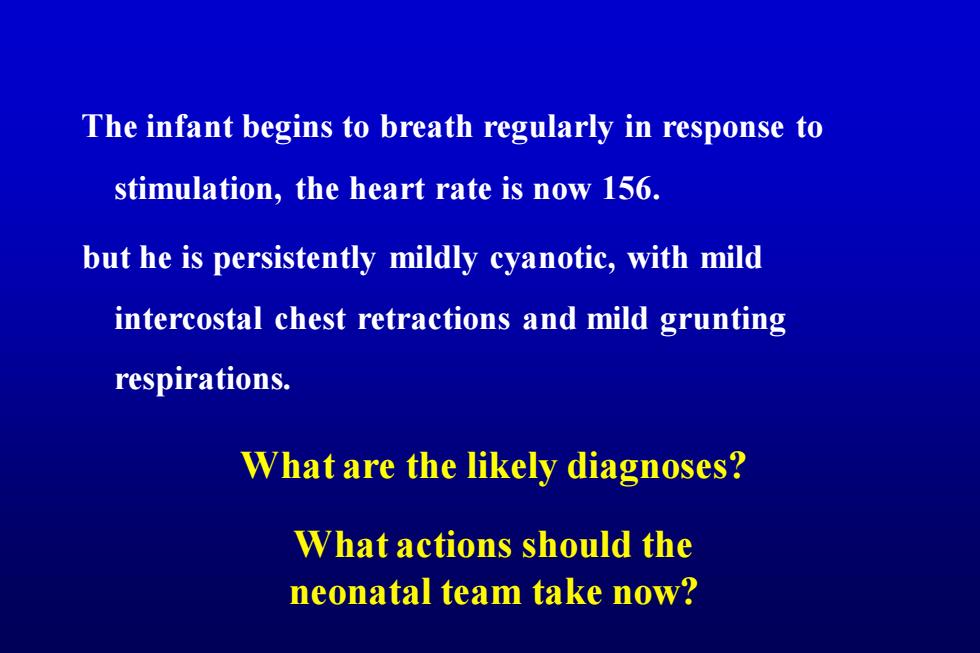
The infant begins to breath regularly in response to stimulation,the heart rate is now 156. but he is persistently mildly cyanotic,with mild intercostal chest retractions and mild grunting respirations. What are the likely diagnoses? What actions should the neonatal team take now?
The infant begins to breath regularly in response to stimulation, the heart rate is now 156. but he is persistently mildly cyanotic, with mild intercostal chest retractions and mild grunting respirations. What actions should the neonatal team take now? What are the likely diagnoses?
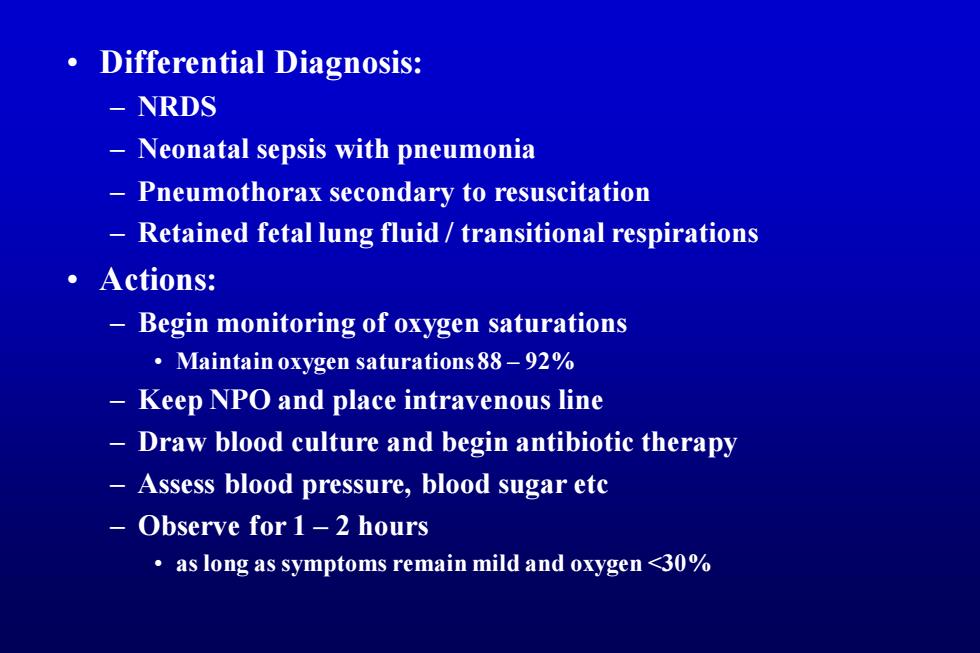
。 Differential Diagnosis: -NRDS Neonatal sepsis with pneumonia Pneumothorax secondary to resuscitation Retained fetal lung fluid transitional respirations ·Actions: Begin monitoring of oxygen saturations Maintain oxygen saturations 88-92% Keep NPO and place intravenous line Draw blood culture and begin antibiotic therapy Assess blood pressure,blood sugar etc -Observe for 1-2 hours as long as symptoms remain mild and oxygen <30%
• Differential Diagnosis: – NRDS – Neonatal sepsis with pneumonia – Pneumothorax secondary to resuscitation – Retained fetal lung fluid / transitional respirations • Actions: – Begin monitoring of oxygen saturations • Maintain oxygen saturations 88 – 92% – Keep NPO and place intravenous line – Draw blood culture and begin antibiotic therapy – Assess blood pressure, blood sugar etc – Observe for 1 – 2 hours • as long as symptoms remain mild and oxygen <30%
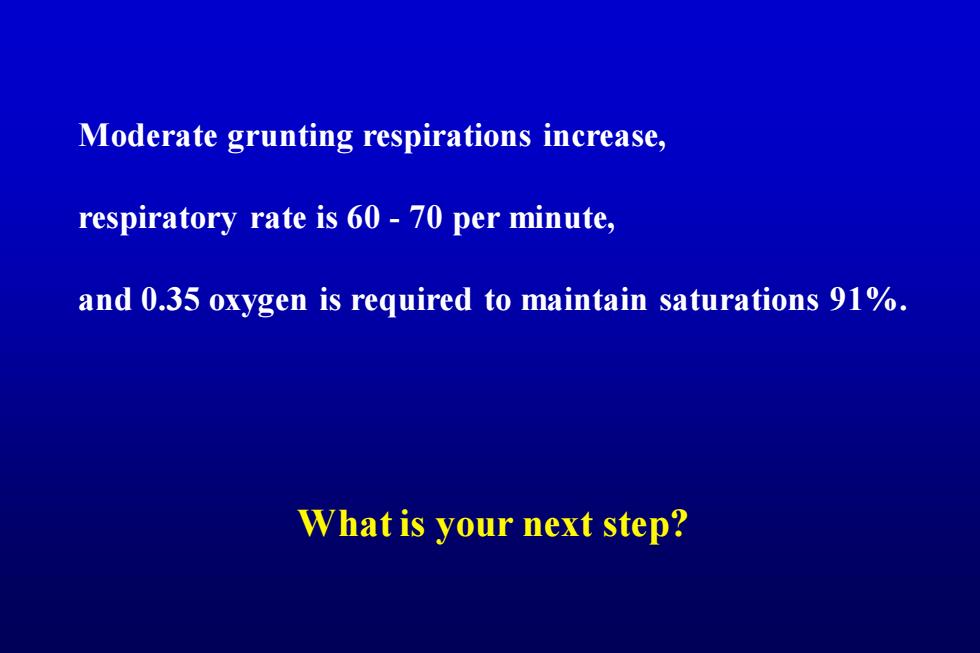
Moderate grunting respirations increase, respiratory rate is 60 70 per minute, and 0.35 oxygen is required to maintain saturations 91%. What is your next step?
Moderate grunting respirations increase, respiratory rate is 60 - 70 per minute, and 0.35 oxygen is required to maintain saturations 91%. What is your next step?
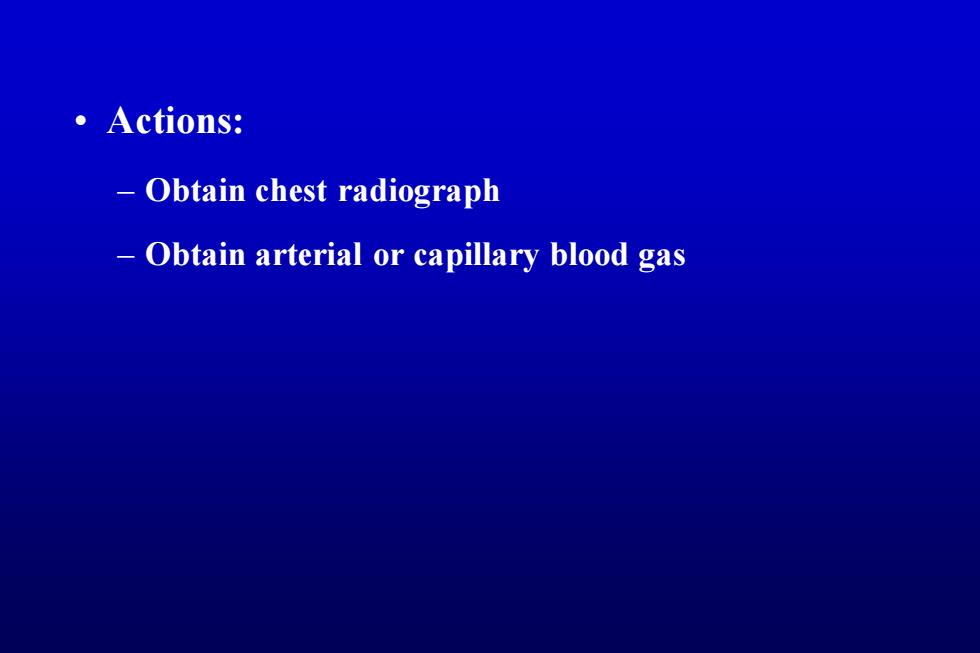
·Actions: Obtain chest radiograph Obtain arterial or capillary blood gas
• Actions: – Obtain chest radiograph – Obtain arterial or capillary blood gas
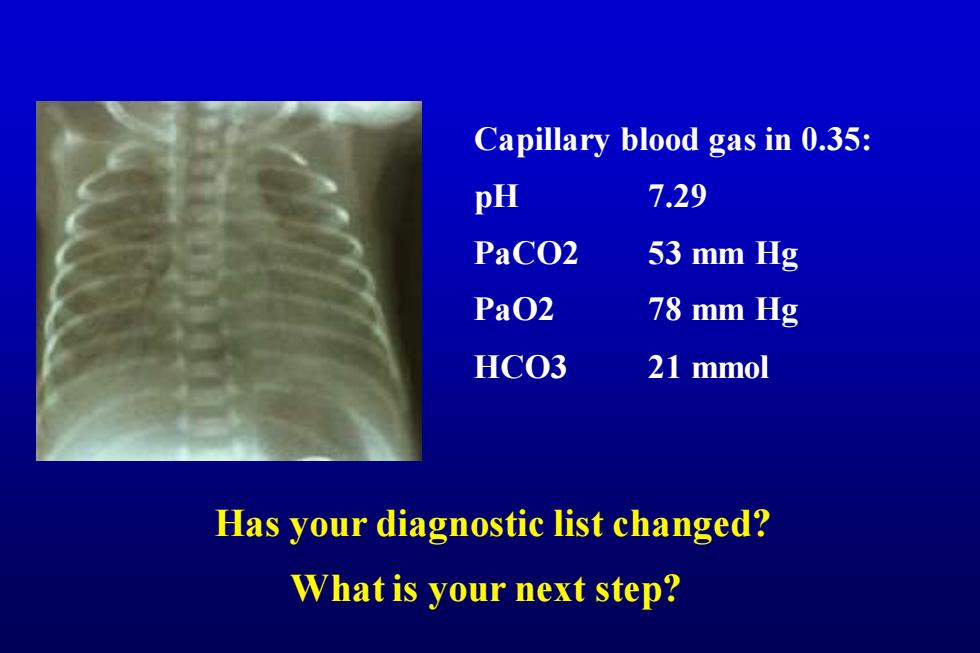
Capillary blood gas in 0.35: pH 7.29 PaCO2 53 mm Hg Pa02 78 mm Hg HCO3 21 mmol Has your diagnostic list changed? What is your next step?
Capillary blood gas in 0.35: pH 7.29 PaCO2 53 mm Hg PaO2 78 mm Hg HCO3 21 mmol What is your next step? Has your diagnostic list changed?